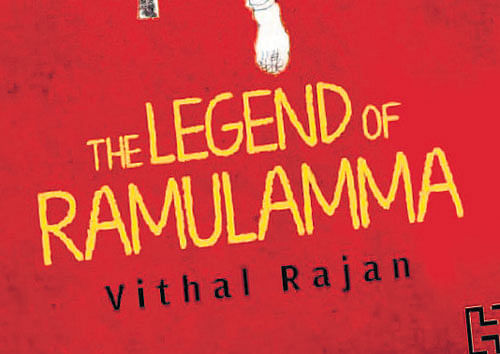It was a year that offered its share of surprises. It reaffirmed the supremacy of the printed word, though. SHREEKUMAR VARMA offers a glimpse of books that made 2014 memorable
.
There’s a thick book lying in the flat where I write. The plot seemed interesting, but I’d no time to read it. The 2014 Booker shortlist rang a bell. The book in the flat (Past Continuous, also known as A Life Apart) was written by Neel Mukherjee, a PIO on the shortlist (he’s described as British). His second, The Lives Of Others, the book that almost took the Booker, was sent to me for review by this paper.
It’s interesting. Two novels, back to back, with a humungous canvas that takes the reader to University. We emerge soaked with knowledge. The first was Zia Haider Rahman’s In The Light Of What We Know.
It had long intellectual, logical conversations delving into the political, philosophical, moral, spiritual core of people, nations, governments and their actions. It also gave you knowledge you didn’t know you wanted. It’s a big, readable novel.
The Lives Of Others is about a family and a revolution. Juxtaposing the fortunes of a once-prosperous Calcutta family and the slow spread of a powerful peasant uprising, the plot dwells in detail on contrasting characters and incidents, again giving us useful by-the-way tips: on the mechanics of paper manufacturing, how to expand/amalgamate business empires, mathematical intricacies, cultivation techniques etc; and they seem natural enough, emerging as they do from deeply delineated character sketches. A world interesting and very alarming.
As in previous efforts, in order to give a sample of the year’s books (especially Indian writing) without cramming the uncrammable into our year-end list, the emphasis is on books I’ve read/reviewed.
The book with the Booker is, of course, Richard Flanagan’s The Narrow Road To The Deep North. Though I haven’t read it as yet, excerpts hint at it being true Booker material. Large and detailed, solid chunks of character and place.
One reviewer (The Telegraph) puts it thus: “Flanagan’s writing courses like a river, sometimes black with mud, sludge and corpses, sometimes bright with moonlight.” The inside story is just as interesting. Flanagan’s father was a POW in Burma and the novel comes as vindication of a burdened life though he died just before its publication.
Two others I read, in complete contrast, though both touch and swirl into the human condition, were The Legend of Ramulamma by Vithal Rajan and K R Meera’s Malayalam novel translated by J Devika, The Hangwoman. The first is a Sherlock Holmes foray into the “untouchable” core of Dalit living in an Andhra village.
If that sounds intriguing, the protagonist is a midwife with entry into the intimacies of households righting wrongs and making, in most cases, the culprits pay. What an idea! I’ve heard people criticise the book for not “conforming” to the detective genre, but novels are stand-alone, in my opinion. They don’t have to be written to fit into slots, unless you’re dishing out money-spinners for clique audiences.
The second, an amazing Malayalam novel, is about a Bengali hangman’s family in Calcutta. Goaded by a mediaman, his young daughter is handed his baton. It’s a deeply felt story, rough and sensitive, tearing into the psyche of brittle lives. Reading it on Kindle at night unleashed powerful images that could remain rather uneasily on a reader’s horizon.
I was also fascinated by this journey: Bengali story, written in Malayalam, conveyed now in English for a wider audience. A wonderful result of the publishing boom is that you have access to other states and cultures, and you can choose from a broad spectrum. It isn’t even about certain types of books and readers coming together. The many-sided reader can choose according to his whim and mood.
The buzz that writers create on social media (sometimes with YouTube trailers) also ensures they needn’t depend on publishers for promotions. The reader reads without planning or browsing, either because he’s friend, family or colleague, obliged or forced, or he’s excited about a plotline that jumps out of nowhere on the Net.
Ashwin Sanghi, whose tête-à-tête with Amish Tripathi I’d once moderated, suggested I read his Private India, which is a sort of Mumbai link in a fiction franchise. It uses a pacey thriller formula with “Hindu” wrappings. Writer-friend Rumjhum Biswas announced her debut novel Culling Crows and Mynahs on Facebook, and I ordered it online. (She’d kept a copy for me, but I believe you should buy a friend’s book, unless there’s no way you can.)
The book is unusual with two strong heroines and an imprisoned murderer, a quaint town and the bylanes of Kolkata, dimensions of guilt and morality. Uneasy images stayed with me. I felt it was brimful of potential that could probably have made the book even bigger.
The Mysterious Ailment of Rupi Baskey. I saw the buzz on Facebook, then writer Hansda Sowvendra Shekhar became an FB friend. So I bought the book online and found it well worth succumbing to the title’s lure. Set in a Jharkhand village among Santhals, it is a gently written romp through thumping tradition, envy and witchcraft. Extraordinary and enjoyable.
I’d also suggest these two non-fiction books: Life On The Edge: The Coming Of Age Of Quantum Biology by Jim Al-Khalili and Johnjoe McFadden which, to put it simply, is about how big things and small things are somewhere connected, and Being Mortal: Medicine and What Matters in the End by Atul Gawande, which is about loosening the edges of medicine to make life worth living right up to the end.
It’s time now to look forward. What the books of 2015 have for us may probably be less surprising than the ways in which they are bought, sold and read. Many new blocks of readers will rise.
We hope literary value and creativity continue to shine as they browse through bookshops and online stores.
